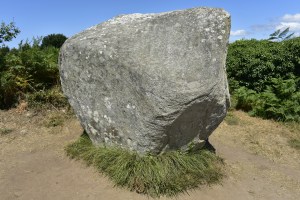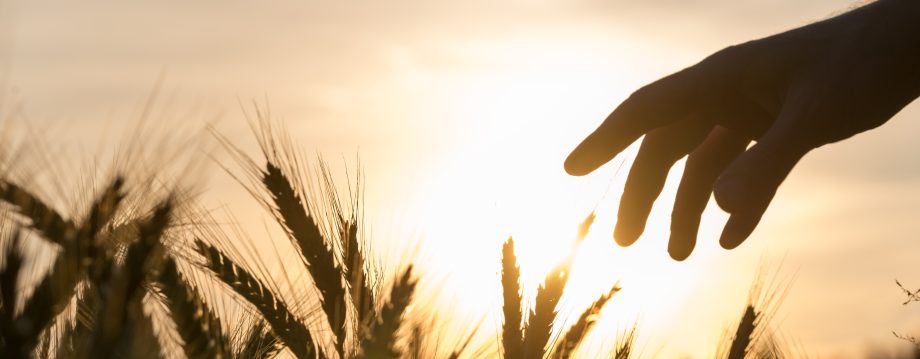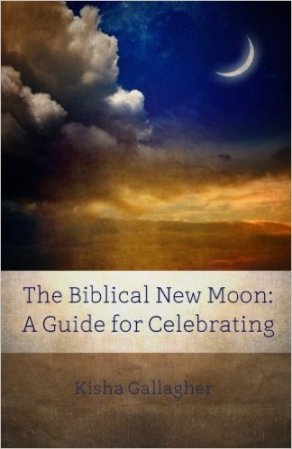In Miriam’s Cup Part I, we looked at the rather new custom of drinking WATER from a goblet inscribed with Miriam’s name during the Passover Seder. We explored where this tradition originated and why it may be important to incorporate into your own Seder. We also discovered the strong connection of Miriam with water. In this post, we will look at how the Holy Spirit is also linked to the imagery of water, wisdom, Pesach, and women.
The Three Leaders of Israel and the Godhead
“Indeed, I brought you up from the land of Egypt And ransomed you from the house of slavery, And I sent before you Moses, Aaron and Miriam. (Micah 6:4)
The rabbis teach us that there are three good gifts that were extended to the children of Israel– the well, the clouds, and the manna. The well was provided due to the merit of Miriam, the clouds of glory because of Aaron, and the manna on account of Moses.[1]
The link between the clouds of glory and Aaron is understandable when considering his specific role. Aaron officiated as High Priest in the Mishkan (Tabernacle) that was perpetually covered with the protective pillar of cloud that shielded it by day. He also ministered daily at the burning altar, just as the parallel pillar of fire hovered over the Mishkan at night.[2] Moses’ association with the heavenly manna is equally fathomable. He was the lawgiver and became synonymous with the Torah or Word of God. Bread (manna) has long been a symbol for the Torah and the Word.

© Jdanne | Dreamstime.com
What might not be immediately apparent is why the rabbis attribute the well or rock that gushed forth water in the wilderness with Miriam. In the Brit Chadashah (N.T.), we learn that the rock that followed them was in fact, Messiah.
For I do not want you to be unaware, brethren, that our fathers were all under the cloud and all passed through the sea; and all were baptized into Moses in the cloud and in the sea; and all ate the same spiritual food; and all drank the same spiritual drink, for they were drinking from a spiritual rock which followed them; and the rock was Christ. (1Cor. 10:1-4)
Is there a contradiction between what Paul teaches in 1 Corinthians and what the rabbi’s say about this “rock” or “well”? I hope to show you the harmony in their teachings with all three leaders (Moses, Aaron, and Miriam) and the glorious gifts (clouds, manna, and the well). In Part I, we started building the foundation as to why Miriam is linked to water. I hope to continue with this premise here. In the Book of Numbers, the water from the rock dries up immediately following Miriam’s death.
Then the sons of Israel, the whole congregation, came to the wilderness of Zin in the first month; and the people stayed at Kadesh. Now Miriam died there and was buried there. And there was no water for the congregation, and they assembled themselves against Moses and Aaron. (Num. 20:1-2)
The Torah seems to beg one to ask the question as to why the congregation had no water immediately following the death of Miriam. In Hebrew, these thoughts run together with a rhythmic flow. Indeed, the people viewed her as a source of life giving waters. Hopefully, you too can make this connection after reading Part I.
Moses, Aaron, and Miriam represented the King of the Universe on the earth. Is it not fitting that there were 3 of them? Isn’t the godhead most often manifested in 3 (Father, Son, Holy Spirit)? Perhaps what may be eating at you is that Elohim would choose a female to represent one of His roles. Moses is clearly the strong father figure to Israel (as Law giver), Aaron is clearly a mediator and priest (like the Son, Yeshua), so Miriam and the life giving waters must represent the Holy Spirit. If you’ve read the Role of Women, this idea isn’t as threatening as it may first appear.
Hebrew students are fully aware that the Spirit of Elohim is always in the feminine form. (This is true of all spirits.) Thus, its not surprising to find God’s Spirit paired with feminine attributes or given to feminine metaphors quite frequently in the Bible. YHWH is neither male nor female, yet He has qualities that we would associate with each sex. This is why it takes BOTH a male and a female to display the image of Elohim in the natural.
The Ruach Hakodesh in Heaven and Earth
To better understand how Miriam, water, and the Holy Spirit can be equivalent expressions, review the first occurrence of Elohim’s Spirit is in Genesis.
The earth was formless and void, and darkness was over the surface of the deep, and the Spirit of God was moving over the surface of the waters. (Gen. 1:2)
What is the Spirit of Elohim doing in the beginning? It is hovering or moving over the WATERS. Thus, our first association of the Ruach Hakodesh is with water. The primordial waters are separated into earthly waters (mayim) and heavenly waters (shamayim). Did you notice how waters and heavens sound alike in Hebrew? Can you see mayim in the shamayim?
Interestingly, the word for heavens, shamayim, denotes “fire waters” as it is a compound of the word water (mayim) and fire (esh).[4] We will explore this idea some more in a moment. But first, look at the word for Spirit in Hebrew: ruach. Most of you already know that ruach is also the word for wind or breath. What might not be immediately obvious is that the air and wind are the heavenly counterparts to the earthly water currents. Wind powers most ocean and air currents. In Hebraic thought these “currents” of the mayim and shamayim reflect one another. Or you could say that “it is on earth as it is in heaven”.
Consider how the birds and fish move, migrate, school, or flock as they follow these currents across the globe — carrying seed. If you find these connections fascinating, I urge you to study Dr. Hollisa Alewine’s Creation Gospel.[5] You’ll never look at creation week or the whole of scripture again without noticing these often repeated themes. Waters and heavens are mirrors of one another; therefore, the notion that the Holy Spirit is both like wind and water is natural in Hebraic thought.
In the Gen. 1:2 verse above, God’s Spirit is moving, hovering, or brooding over the waters. Indeed, the Spirit of YHWH is active like the wind/birds and the water/fish. The Hebrew verb used is rachaph; the AHLB[6] defines it as the following:
Strongs #7363: AHLB#: 2763 (V) Flutter: The stirrings and shakings of a bird in the nest – Flutter: [freq. 3] (vf: Paal, Piel) |KJV: shake, move, flutter| {str: 7363}
Did you notice the tangible picture of a mother bird fluttering, shaking, and stirring her nest? Does this bring other verses to mind about Elohim being a protective mother bird?
“Like an eagle that stirs up its nest, That hovers over its young, He spread His wings and caught them, He carried them on His pinions. (Dt. 32:11)
Like flying birds so the LORD of hosts will protect Jerusalem. He will protect and deliver it; He will pass over and rescue it. (Is. 31:5)
“Jerusalem, Jerusalem, who kills the prophets and stones those who are sent to her! How often I wanted to gather your children together, the way a hen gathers her chicks under her wings, and you were unwilling. (Mt. 23:37)
These movements are mimicked in the word for Passover, Pesach. It is a derivative of the protective fluttering actions of a mother bird.[7] [8] Indeed, our Great Elohim moves, flutters, leaps, and hovers over His Creation and His people like a mother protecting her precious chicks. This nurturing aspect of YHWH is divinely displayed in the female creatures of His creation. The Exodus story and the original Passover speak to our initial redemption, which is the Father calling us out for Himself. The “immature” state of the people (and us!) at this initial point of salvation necessitates the tenderness that can only be offered by a mother. Thus, we see YHWH’s Spirit pesach(ing) over the homes of His newborn chicks in Israel.
Pesach and Baptism
By carefully examining what happened when the “death angel” came through Egypt, we see that the same Spirit of YHWH that protected the Israelites also killed the first born of Egypt.
‘The blood shall be a sign for you on the houses where you live; and when I see the blood I will pass over you, and no plague will befall you to destroy you when I strike the land of Egypt. (Ex. 12:13)
Now it came about at midnight that the LORD struck all the firstborn in the land of Egypt, from the firstborn of Pharaoh who sat on his throne to the firstborn of the captive who was in the dungeon, and all the firstborn of cattle. (Ex. 12:29)
The Ruach HaKodesh can nurture and protect and at the same time bring destruction on His enemies. The Spirit is truly like the “waters” that we discussed in Part I. The difference is that the Holy Spirit is always acting with righteousness, even in judgment. After the Children of Israel are released from the grip of Pharaoh, they flee to the wilderness. Without a constant and considerable food and water source, the fledgling nation would be sure to die.
What happens is follows:
- After 3 days without water, they reach Marah. The waters are bitter (undrinkable). Moses casts a branch in the waters and they are “sweetened”. (Ex. 15) This was YHWH testing the people.
- They then find an oasis at Elim where 12 streams water the 12 tribes. (Ex. 15)
- The people begin to cry out for food. YHWH provides them with the heavenly manna. (Ex. 16)
- They reach Rephidim and again cry out for water. YHWH instructs Moses to strike the rock at Mt. Horeb and water gushes out for the people. (Ex. 17)
A person can live far longer without food than water. The beginning of Israel’s wilderness journey seems to center around issues of water. Miracles and judgments happen with water. Rejoicing and praise are performed by the edge of water. Bitter water is sweetened as a test. The twelve tribes each find their own refreshing stream at Elim. A miraculous “rock” becomes a well that can sustain millions. That same rock FOLLOWS them!
Water, water everywhere! Though the children can’t see it in the natural, they are surrounded with life giving water. (Does this remind you of the Rivers of Eden?) Is this not just like the Holy Spirit? We can’t see the “Spirit”, yet it is everywhere. One connection to the Spirit and water that is tangible to most all Believers is Baptism (or immersing in a Mikveh).

© Gijsvdabeele
| Dreamstime.com
Baptism is a natural picture of the work of the Holy Spirit in the very beginning. The movement and separation of the mayim (water) and shamayim (fire waters) is the same moving and separating that happens when we experience this ritual.[9] It may be an outward symbol of an inward work, but to assume the Holy Spirit isn’t directly involved (and often in a very visible way) is not true. The washing and filling is pictured by both the water and the holy fire! Sometimes these are simultaneous experiences, and sometimes they are separate. Nevertheless, they reflect one another like the waters and the heavens and like the pillar of cloud and the pillar of fire. Unlike some, I fully believe this process is in continual motion and cyclical even in our individual lives.
But this still leaves us with our original question. Why are Messiah and Miriam both equated to the rock or well of water in the wilderness? Speaking of Messiah, Paul also has this to say:
For in him dwelleth all the fulness of the Godhead bodily. (Col. 2:9 KJV)
Elohim is One (Shema Dt. 6:4). When Yeshua walked the earth, He was the tangible form of the fullness of YHWH. Thus, we see Him in numerous places attributing an action to Himself and then declaring that the same action is really from the Holy Spirit or the Father.
Yeshua will not leave us comfortless, He will come to us, yet the comforter is the Holy Spirit.[10] Yeshua gives us Living Waters, but then proclaims that these waters are the Holy Spirit.[11] Just as Moses and even Aaron were prefigures of the Messiah, so is Miriam. The analogies are similar to both Moses and Yeshua being the Law giver. Or both Aaron and Yeshua being the High Priest. Why would it be any different for both Miriam and Yeshua to be the well in the rock? Therefore, who is right? The rabbis or Paul? The answer is both!
Stay tuned for one last post in this series. My hope is to conclude by filling Miriam’s Cup with the Living Waters and the Mashiach in Part III.
[1] Talmud Bavli (Babylonian Talmud), Tractate Ta’anit 9a: R. Jose the son of R. Judah says: Three good leaders had arisen for Israel … Moshe, Aaron and Miriam, and for their sake three good things were conferred [upon Israel], namely, the Well, the Pillar of Cloud and the Manna; the Well, for the merit of Miriam; the Pillar of Cloud for the merit of Aaron; the Manna for the merit of Moshe.
[2] Exodus 40:38
[3] See my post The Biblical Role of Women Part V for more on the feminine aspects of the Holy Spirit.
[4] The roots of the word shamayim are אש (esh, fire) and מים (mayim, water) The beginning letter א (aleph) is a silent stand-in for a beginning consonant, nothing more. Dropping it does not change the meaning of the two-letter word. So the Hebrew שמים literally means fire in water. The great Jewish commentator Rashi says this about Genesis 1:8: The word shamayim is a contraction of [a word for] carrying of water, also [a word meaning] there is water, also esh and mayim, [meaning] fire and water. He blended them with one another and made the heavens from them. For more imagery of fire, see The Biblical Role of Women Part XI.
[5] Thecreationgospel.com
[6] Ancient Hebrew Lexicon of the Bible by Jeff Benner
[7] They share the two letter parent root chet, pey; which means to cover (in protective action).
[8] See my post on the Meaning of Passover.
[9] John answered and said to them all, “As for me, I baptize you with water; but One is coming who is mightier than I, and I am not fit to untie the thong of His sandals; He will baptize you with the Holy Spirit and fire. (Luke 3:16)
[10] John 14
[11] John 7:38-39





Incredible! How absolutely refreshing and sensible. Isn’t it wonderful what can be opened up when you are willing to be open and desire Truth. May we all be in a place to receive Truth so that we can move forward, grow, mature, and become exactly what YHVH created us to be. Thank you Kisha, for this. Excited for the final installment.
LikeLike
Thanks for the encouragement, Sherri! You echo my heart’s cry exactly. And thank you for being a very needed voice in the area of healing. I’m going back through your book again for the second time — this time slower — I want to “chew” on it this time, lol!
Shalom and be blessed sweet sister,
K.
For those interested: Sherri’s book can be found here: http://www.truesourceofhealing.co/
LikeLike
Thank you for this blog. I have found your writings helpful and inspiring.
LikeLiked by 1 person
Thanks for stopping by and commenting, Dianne. Your words encourage me! 🙂
LikeLike
Pingback: The Biblical Role of Women Part XI | GRACE in TORAH
Pingback: Miriam’s Cup Part I | GRACE in TORAH
Pingback: Rosh Chodesh Shevat 5779 (2019) | GRACE in TORAH